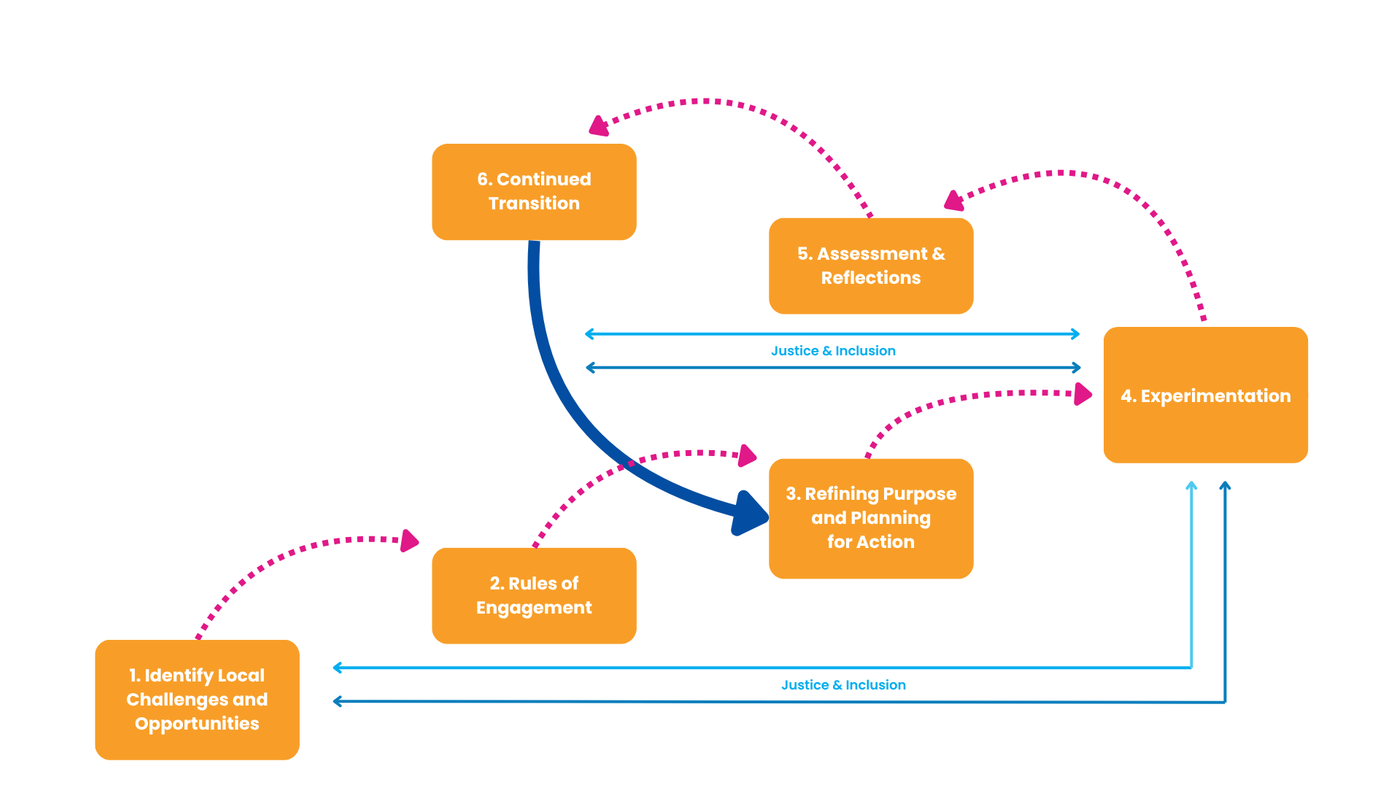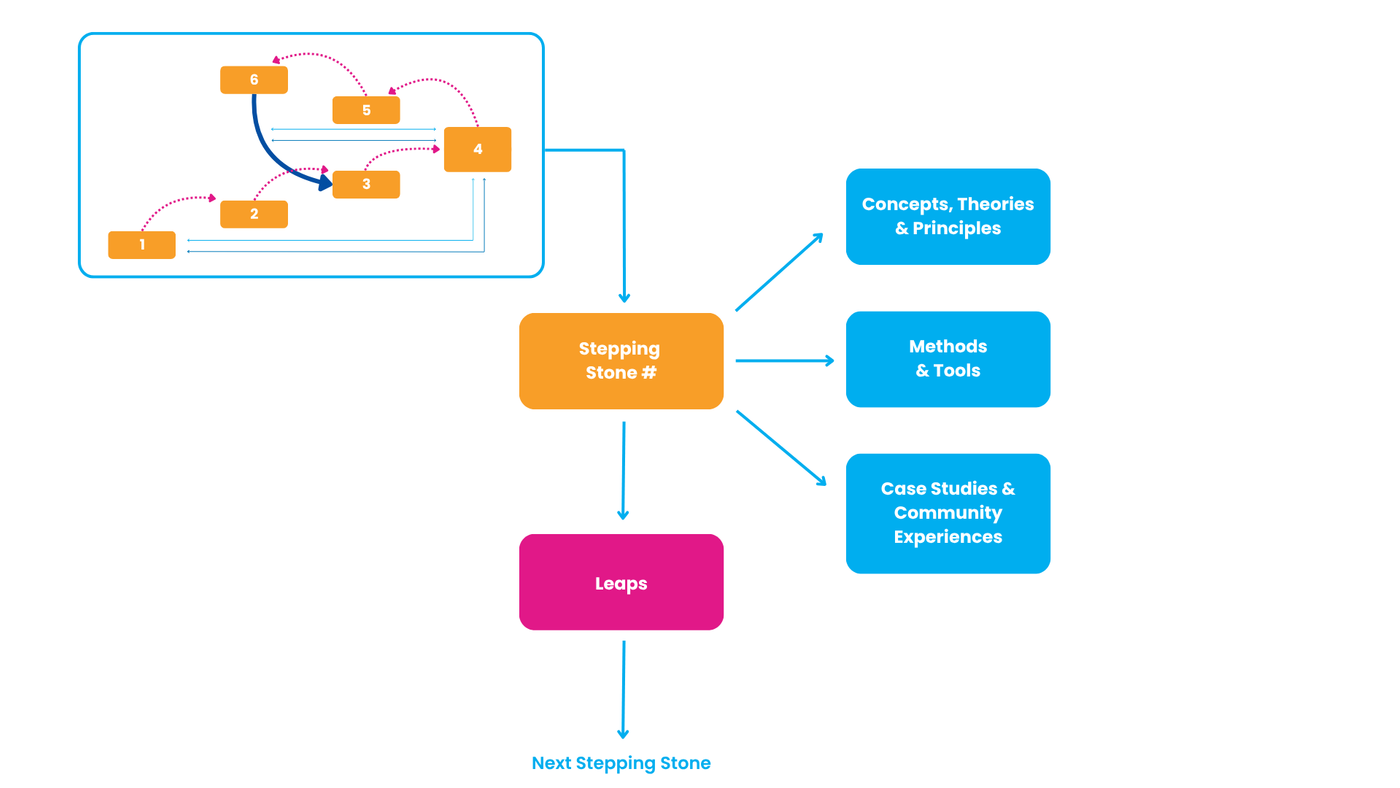Transition Roadmap (Stepping Stone)
Over the past decade, building partnerships among local people, non-profit organisations, governmental agencies at different levels, and multidisciplinary researchers, has emerged as a prominent approach, aiming for more inclusive and just processes to guide community transitions. This roadmap offers a model that outlines and explains the core elements to consider before and during such an approach. We label these core elements and their associated activities 'Stepping Stones'.

The EmpowerUs project is centred on the coastal community context. In the coastal context, transitions involve the struggle to re-balance the (over)use of marine areas and resources, while maintaining community identities and viability where reliance on the blue economy has deep roots. While the knowledge shared here is developed in the coastal context, other kinds of communities may make use of the knowledge and tools to a large extent, as long as they reflect what ought to be changed to address local needs.
We have developed a 6-step 'cycle of transition' that encourages building local capacity to continue efforts beyond funded research projects. The six steps are illustrated as stepping stones that you see in the roadmap below. The arrows indicate that when one cycle is complete - in which tangible results are recognised by the community and a solid foundation for collaboration has been created - these partnerships can continue working together, building on the experiences and social capital now established. This stepping-stone model offers resources to be used for action-based knowledge generation, trust building, and local empowerment*, ensuring that community voices and needs are included and incorporated.

Figure 1. Stepping Stones model
How to use the Roadmap
As you navigate through the model you will find three different types of resources under each stone. The first type of resource available under each stone are 'Concepts & Principles' that have resulted from our partnership. These resources are in the form of published papers and reports that will give evidence-based and theoretically grounded, deep understanding of the topics. The second element reflects 'Methods & Tools' and contains a collection of useful templates that can be adapted to fit new topics and contexts, making it possible to build on our work rather than starting from scratch. Third, we include 'Community Experiences' with examples to illustrate what may take place during the six steps of a deliberatively planned co-creation* process. This collection should be seen as inspiration for activities and will help make both the 'Concepts & Principles' and the 'Methods & Tools' 'come to life' and be relatable to a broad audience.
The final element of our model is represented in the Leaps taken between stepping stones. In the leaps we prompt reflection and ongoing self-evaluation on reaching goals and objectives, while paying attention to inclusion* and justice* throughout the partnership, in order to promote an inclusive transition resulting from the work. Therefore, each leap will have prompts to aid reflection and 'on the spot' evaluation that can address shortcomings while working together to arrive at the best possible outcome for all partners.
The community-led change processes and practices are organised in the following 6 phases in the stepping-stone model:
1) Reasons to Convene: Identifying Local Challenges and Opportunities 2) Rules of engagement: Setting the scene for Inclusion and Engagement 3) Refining Purpose and Planning for Action 4) Experimentation: Putting Plans into Action 5) Assessment & Reflections 6) Continued Transition: Return to Step 3

Figure 2. Stepping Stones model - Leaps
*An overview of definitions of the various concepts that appear in the roadmap is available here.





